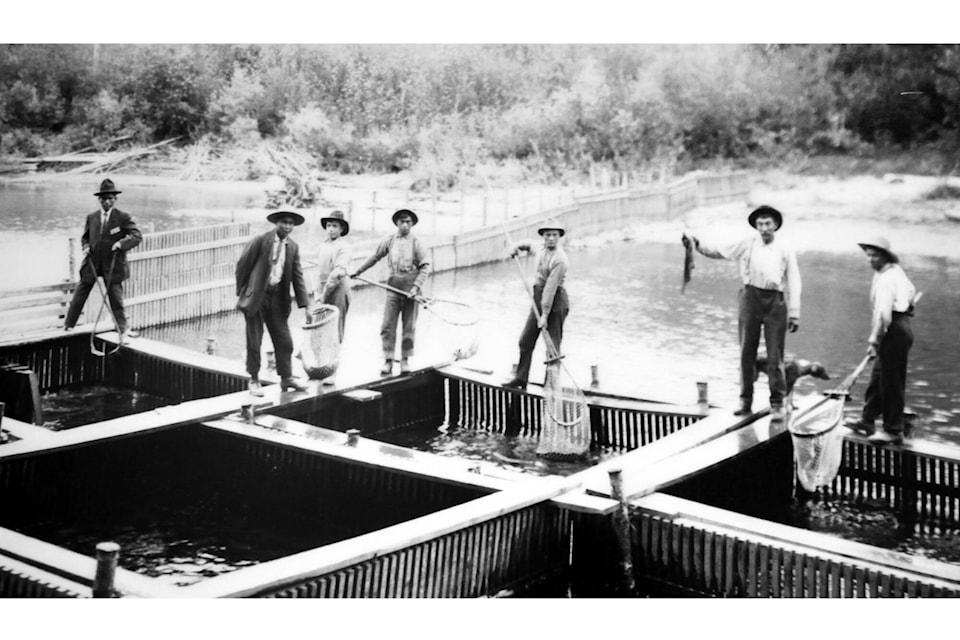By Erin Stodola
Contributor
Perhaps you already know the stories of Percy Ruth and Scotty Mitchell, settlers in early Salmon Arm.
Perhaps you know, too, that they advocated for responsible resource management when the rhetoric of the day was that we would never run out. But did you know that they owe much of their success to the guidance and worldview shared with them by their Secwépemc friends and employees?
BC Heritage Week’s theme, Altogether Inclusive, brought to mind for us at R.J. Haney Heritage Village and Museum these stories that highlight Secwépemc generosity and inclusivity.
Percy Ruth operated a seed-collecting business in the early part of the 20th century, shipping Sitka spruce, Douglas fir, and other conifer seeds to the UK. Part of a reforestation project after the lumber demands of the First World War, Ruth employed many Secwépemc workers to collect tree seeds. Instead of collecting seeds by felling trees, as Ruth first attempted, the workers showed him how to find squirrel caches from which to collect.
D.S. (Scotty) Mitchell, a Scotsman by birth, worked his whole life on the health of salmon ecosystems in the Shuswap area. Upon arrival in 1889, he was struck by the sophistication of the sustainable and harmonious systems that had been employed by Secwépemc people for centuries. The Secwépemc knew how to ensure they had enough salmon and other resources, without depleting them and without disturbing the balance of all things within the ecosystem. Mitchell documented this thoroughly and petitioned government to take notice.
Read more: Public to play interactive role in Salmon Arm Heritage Week celebration
Read more: The Shuswap ranks high on list of most-loved Canadian destinations
Before the arrival of government forest management, the Secwépemc also knew how to mitigate the devastation of forest fires. They knew what to burn, what to maintain, when, and how to live with a landscape that was prone to catching fire. Early forestry practices could have looked to examples that had been working well for centuries, but instead kept out Indigenous voices. We might be looking at a different fire and climate reality than we are now had First Nations voices been included and expertise heeded.
We work best when we work together.
To find inclusive, sustainable and just solutions to pressing environmental crises like water and forest management, we simply have to look to those who have been successfully doing it long before us. If we stay curious and open to knowledge, like Ruth and Mitchell, our community will be all the wiser.
To learn more about these stories, visit the R.J. Haney Heritage Village and Museum’s display at the Mall at Piccadilly as part of Heritage Week, February 21 to 27. Activities throughout the week include the On This Spot photo contest, a scavenger hunt, a colouring contest and an online silent auction. For more information, visit www.salmonarmmuseum.org.
newsroom@saobserver.net
Like us on Facebook and follow us on Twitter
Sign up for our newsletter to get Salmon Arm stories in your inbox every morning.
